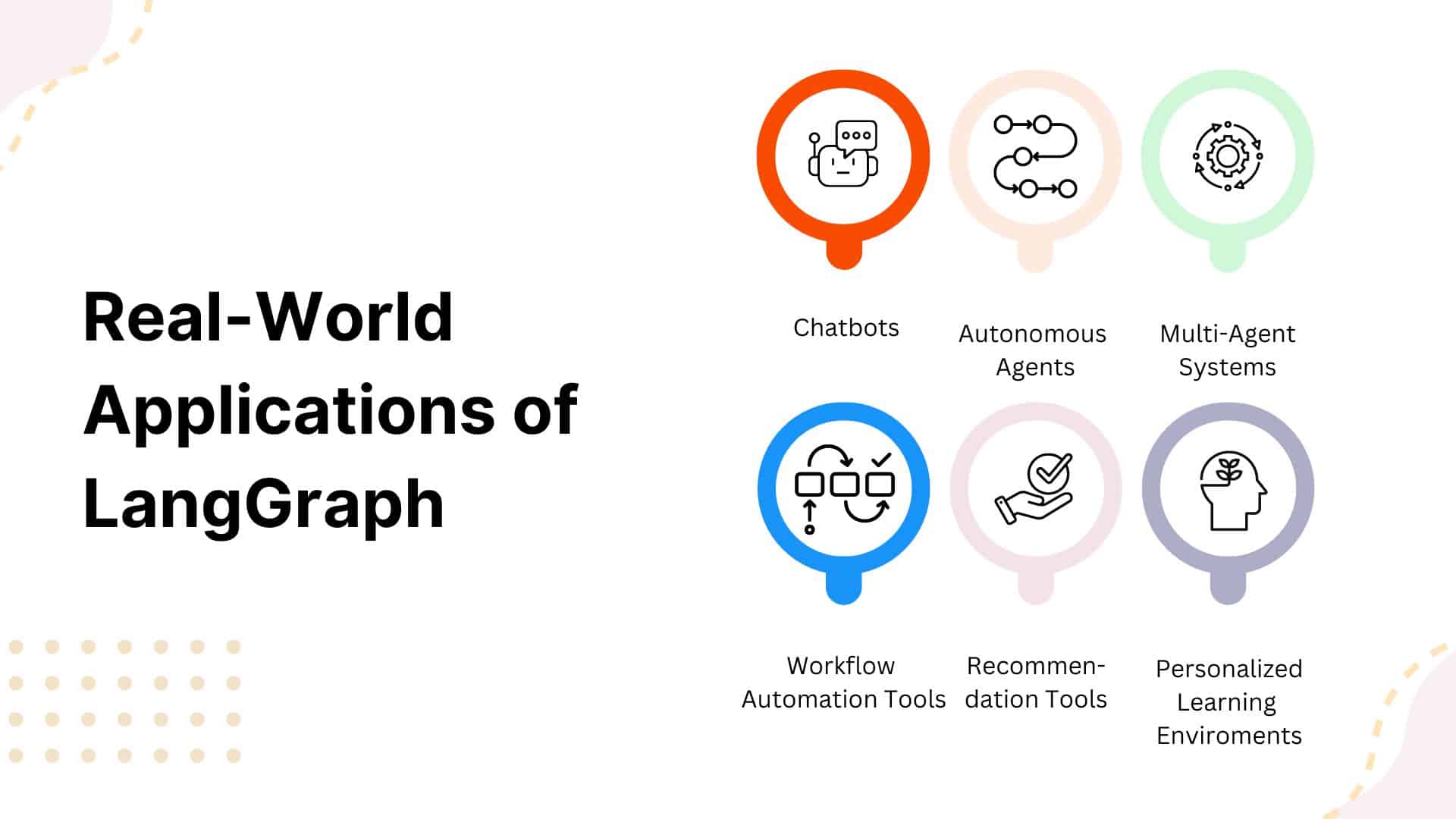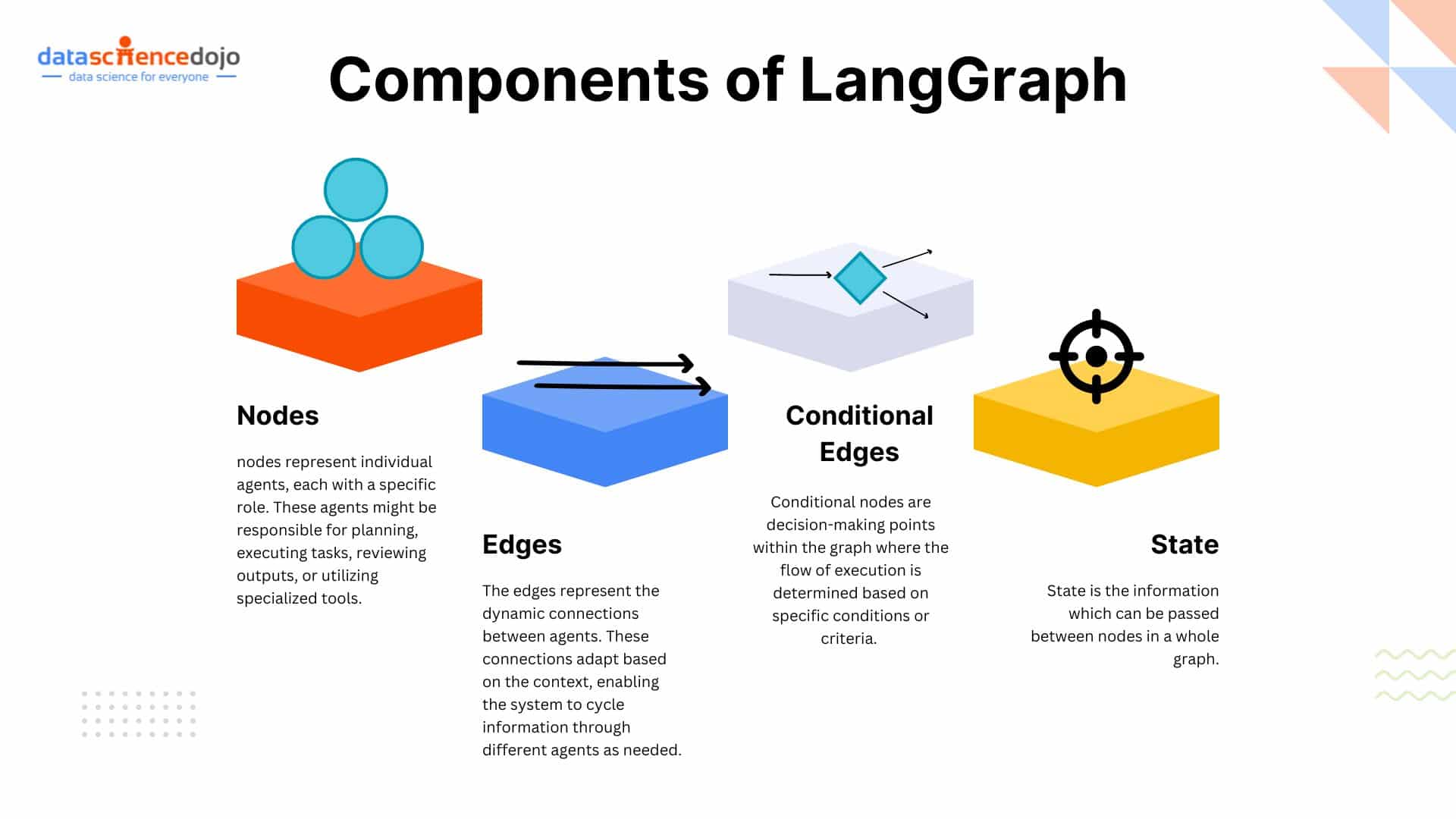Welcome to Data Science Dojo’s weekly AI newsletter, “The Data-Driven Dispatch“.
AI agents have become the talk of the town in 2024. And rightly so! They’re the gateway to maximizing the potential of generative AI.
How? It’s simple.
The way human beings divide complex tasks among experts, and then collaborate to achieve higher goals, agentic applications can break down AI projects into manageable steps, iterate on solutions, use different tools, and adapt their strategies in real time.
Hence, the potential of language models increases substantially through the agentic approach compared to the zero-shot or few-shot prompting that we usually do.
There are quite a lot of agentic frameworks that can leveraged to build AI agentic applications, but LangGraph stands out because of its ease of use, and how it allows one to build iterative, decision-based flows that advanced AI agentic frameworks often require.
Let’s dig into LangGraph and how you can leverage it to build complex agentic AI apps.
What is LangGraph? And Why Does it Matter?
LangGraph is a framework tailored to construct complex, multi-agent systems where various AI agents work together in a coordinated fashion.
Unlike LangChain, which primarily focuses on creating sequences of operations, LangGraph excels at supporting the creation of agentic architectures through cyclical graphs.
These graphs allow for dynamic interactions and connections between agents, enabling more flexible AI behaviors. It’s like your application is a directed graph.
LangGraph supports diverse control flows – single agent, multi-agent, hierarchical, and sequential – and robustly handles realistic, complex scenarios.
Here are some examples of agentic flows you can create with LangGraph. This is a non-exhaustive list, as the possibilities with the framework are infinite.
Features of LangGraph: Attain Ultimate Control Over Agentic AI Framework
The features that differentiate LangGraph include:
- Agentic Coordination with Cyclic Graphs: It allows the creation of cyclic graphs, enabling agents to interact in loops where outputs can be fed back into the system. This supports iterative processing and dynamic control flow among agents.
- State Management with Built-in Persistence and Streaming: It provides built-in state persistence, allowing you to capture and inspect the state of an agent at any specific point in time. This ensures traceability and facilitates debugging.
- It also supports real-time streaming, where outputs from each node are available as they are generated, allowing immediate observation of agent activity and system behavior.
- Human-in-the-Loop: It enables human intervention in agent workflows, allowing the interruption of execution to approve, modify, or reroute the next action an agent plans to take.
How Does it Work? Decoding the Components
Real-World Applications: Explore the Unlimited Possibilities
LangGraph is a versatile tool that can be used to build a variety of applications.

Dive Deeper into Agentic Applications with LangGraph & Langchain
LangGraph makes it easy for you to build advanced LLM apps. It revolutionizes information access by employing various features that help connect diverse data sources and facilitate a more cohesive and accessible information landscape.
Here’s an in-depth tutorial by Shadab Hussain, where he dives deep into how LangGraph and Langchain can enhance user access and drive industry transformation.
To connect with LLM and Data Science Professionals, join our discord server now!

Comment down if you can relate!


If you’re keen to pursue a career in Generative AI and LLMs, here’s a great guide that will get you started. Find the 17 most-asked questions in AI interviews that will help you ace them.
Explore now:

Finally, let’s end the newsletter with some interesting headlines for this week.
- Federal Trade Commission announces final rule banning fake AI reviews and testimonials. Read more
- Alibaba releases breakthrough in AI for math reasoning – Qwen-2 Math. Explore more
- Google quietly opens Imagen 3 access to all U.S. users. Read more
- Researchers have introduced AI Scientist, an innovative workflow that utilizes large language models to automate idea generation, code development, and documentation for AI research. Decode now
- Apple is expected to debut the first generative AI iPhone at its September 9 event. Read more





